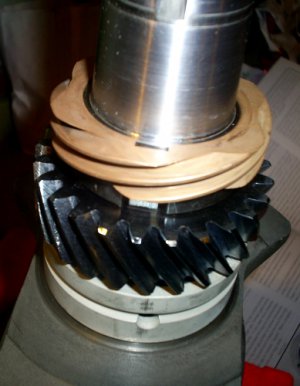- Joined
- Nov 16, 2012
- Messages
- 5,596
All,
Here's a very nice table of linear expansion constants for a variety of materials. Just wanted to pass this reference along and include a practical example. FWIW: I keep a laser thermometer near the lathe and mill so I can accurately machine things for ambient conditions. This chart is printed and hanging on the wall.
http://www.engineeringtoolbox.com/linear-expansion-coefficients-d_95.html
For those who wish to know, the table tells you how much something expands based on temperature change. The chart shows ISO (mm/mm/K) and SAE (in/in/F) values. In SAE, this is interpreted as "Inches of change PER inch of material PER degree Fahrenheit". In ISO, it reads "millimeters PER millemeter of material PER Kelvin". (Kelvin = degrees (C) + 273.15).
Example: Let's say you have a 316 Stainless bar measuring 3.500" diameter and it's heated to 140(F) due to recent machining operations. What will the diameter be when it cools to 68(F)?
From the table, expansion coefficient for 316 Stainless is 8.9x10[SUP]-6[/SUP].
Temperature difference is 140-68 (= 72)
Amount of change: 8.9x10[SUP]-6[/SUP] X 3.500 X 72 = 0.0022.
Final diameter at 68F: 3.500 - 0.0022 = 3.4978"
Example: The same shaft from earlier is 36 inches long. How long will it be when it cools to 68(F)?
8.9x10[SUP]-6[/SUP] X 36 X 72 = 0.0231"
Final length at 68F: 36 - 0.0231= 35.9769"
Ray
Here's a very nice table of linear expansion constants for a variety of materials. Just wanted to pass this reference along and include a practical example. FWIW: I keep a laser thermometer near the lathe and mill so I can accurately machine things for ambient conditions. This chart is printed and hanging on the wall.
http://www.engineeringtoolbox.com/linear-expansion-coefficients-d_95.html
For those who wish to know, the table tells you how much something expands based on temperature change. The chart shows ISO (mm/mm/K) and SAE (in/in/F) values. In SAE, this is interpreted as "Inches of change PER inch of material PER degree Fahrenheit". In ISO, it reads "millimeters PER millemeter of material PER Kelvin". (Kelvin = degrees (C) + 273.15).
Example: Let's say you have a 316 Stainless bar measuring 3.500" diameter and it's heated to 140(F) due to recent machining operations. What will the diameter be when it cools to 68(F)?
From the table, expansion coefficient for 316 Stainless is 8.9x10[SUP]-6[/SUP].
Temperature difference is 140-68 (= 72)
Amount of change: 8.9x10[SUP]-6[/SUP] X 3.500 X 72 = 0.0022.
Final diameter at 68F: 3.500 - 0.0022 = 3.4978"
Example: The same shaft from earlier is 36 inches long. How long will it be when it cools to 68(F)?
8.9x10[SUP]-6[/SUP] X 36 X 72 = 0.0231"
Final length at 68F: 36 - 0.0231= 35.9769"
Ray


